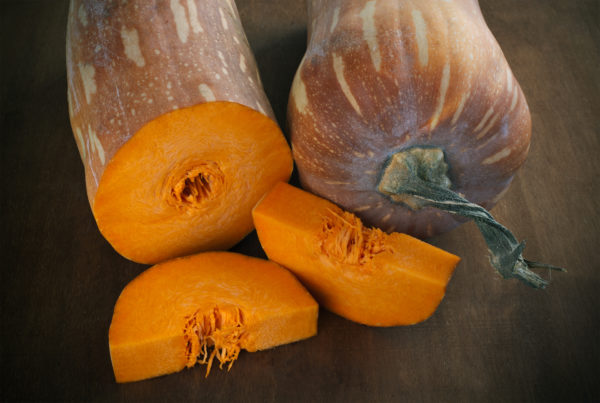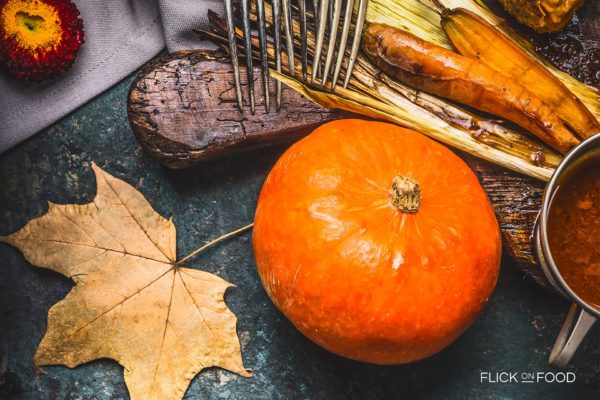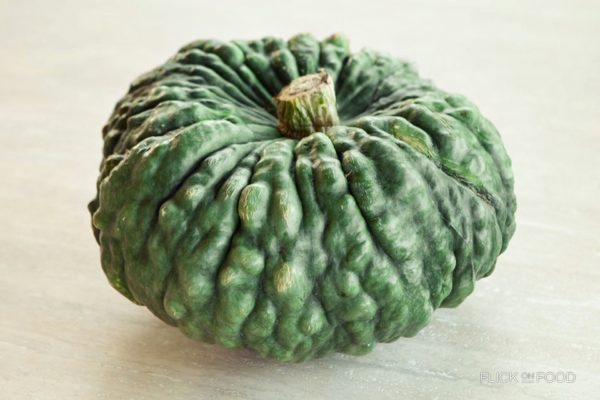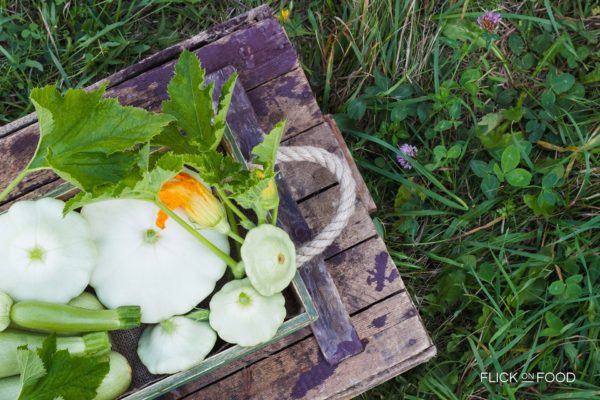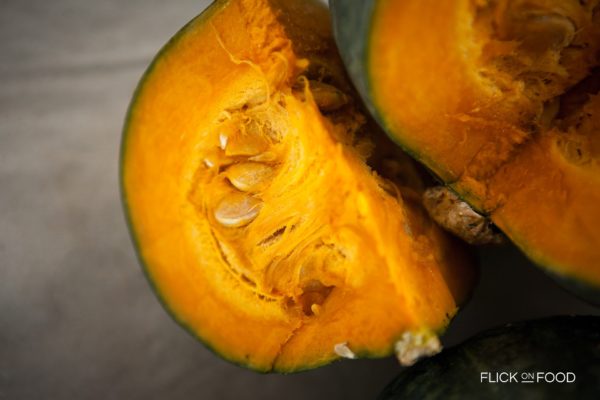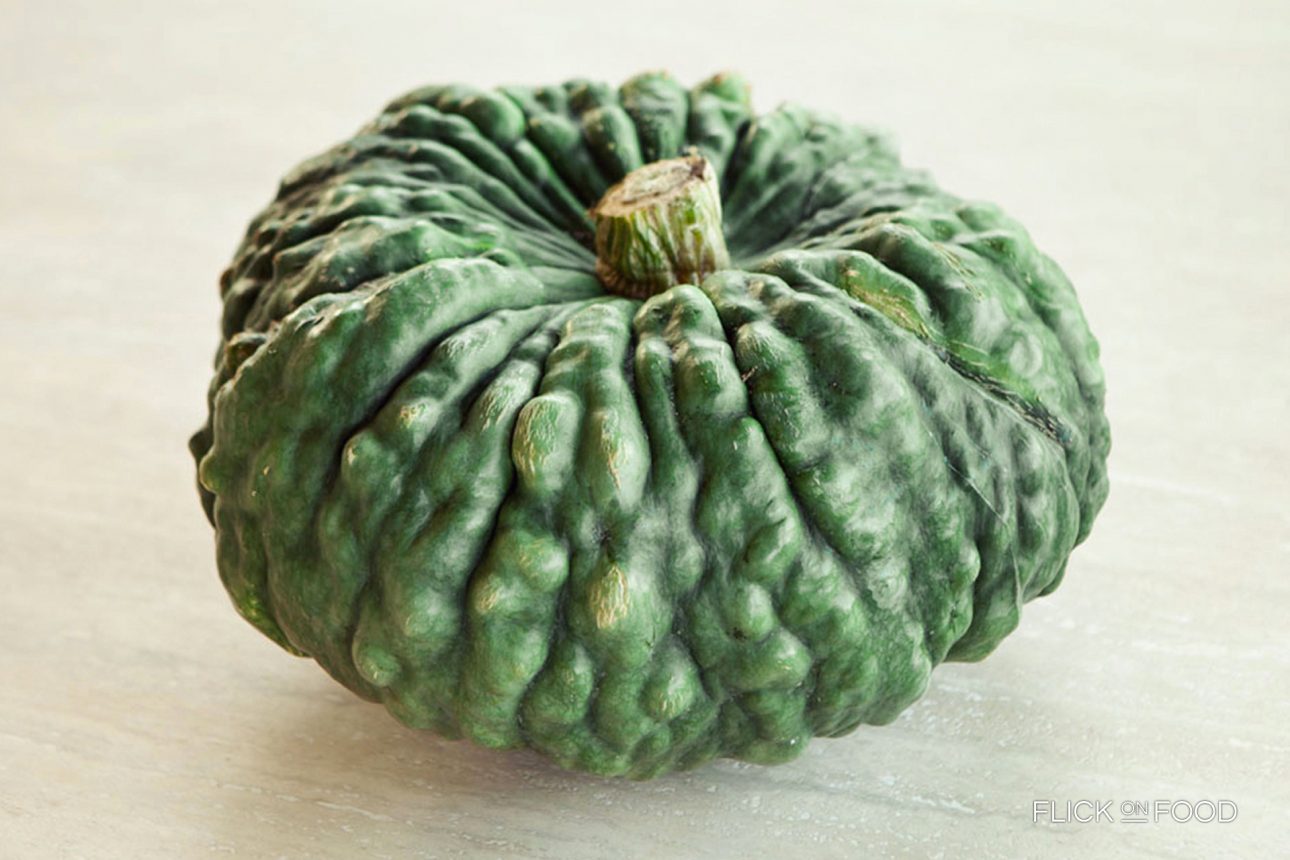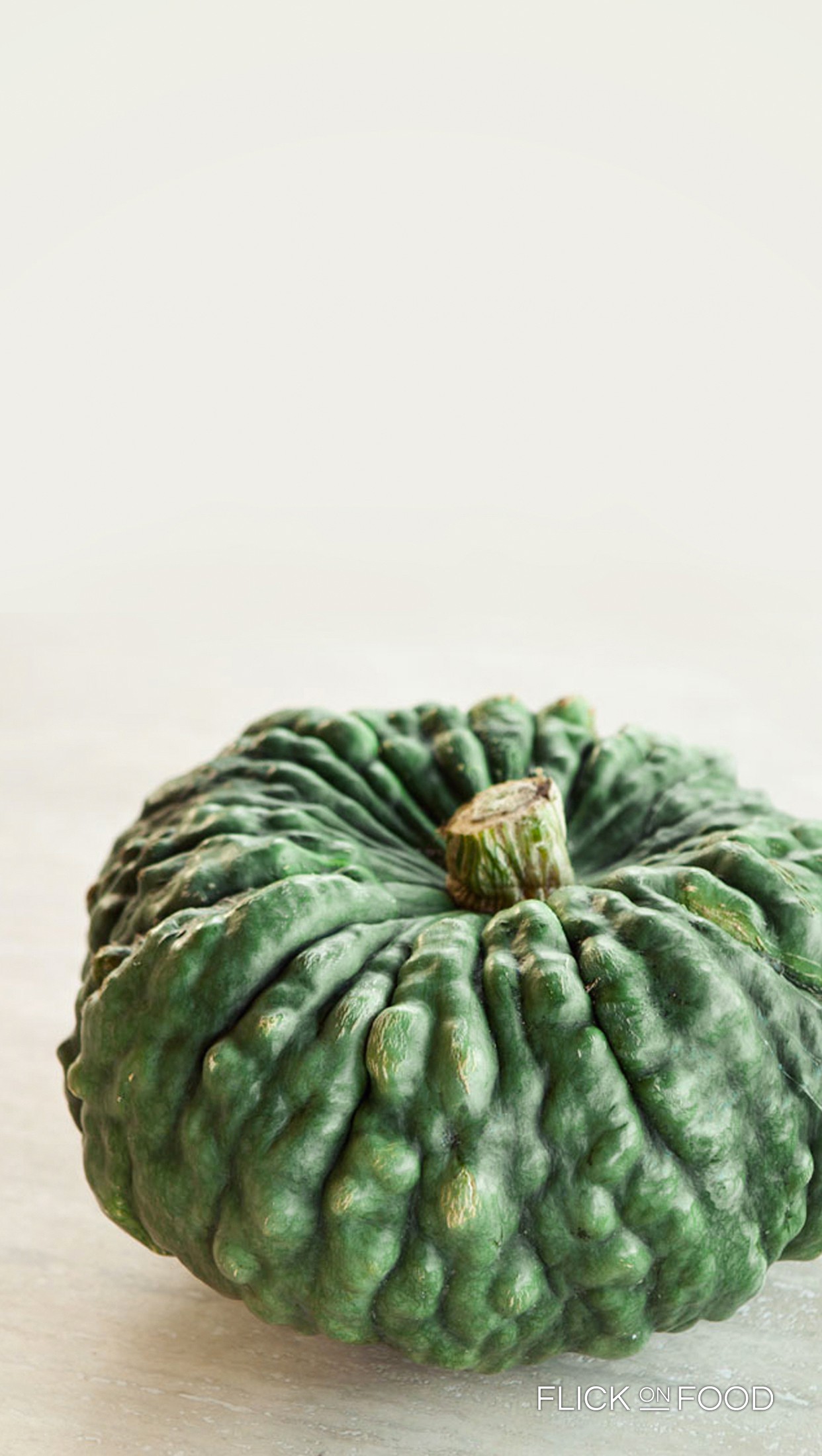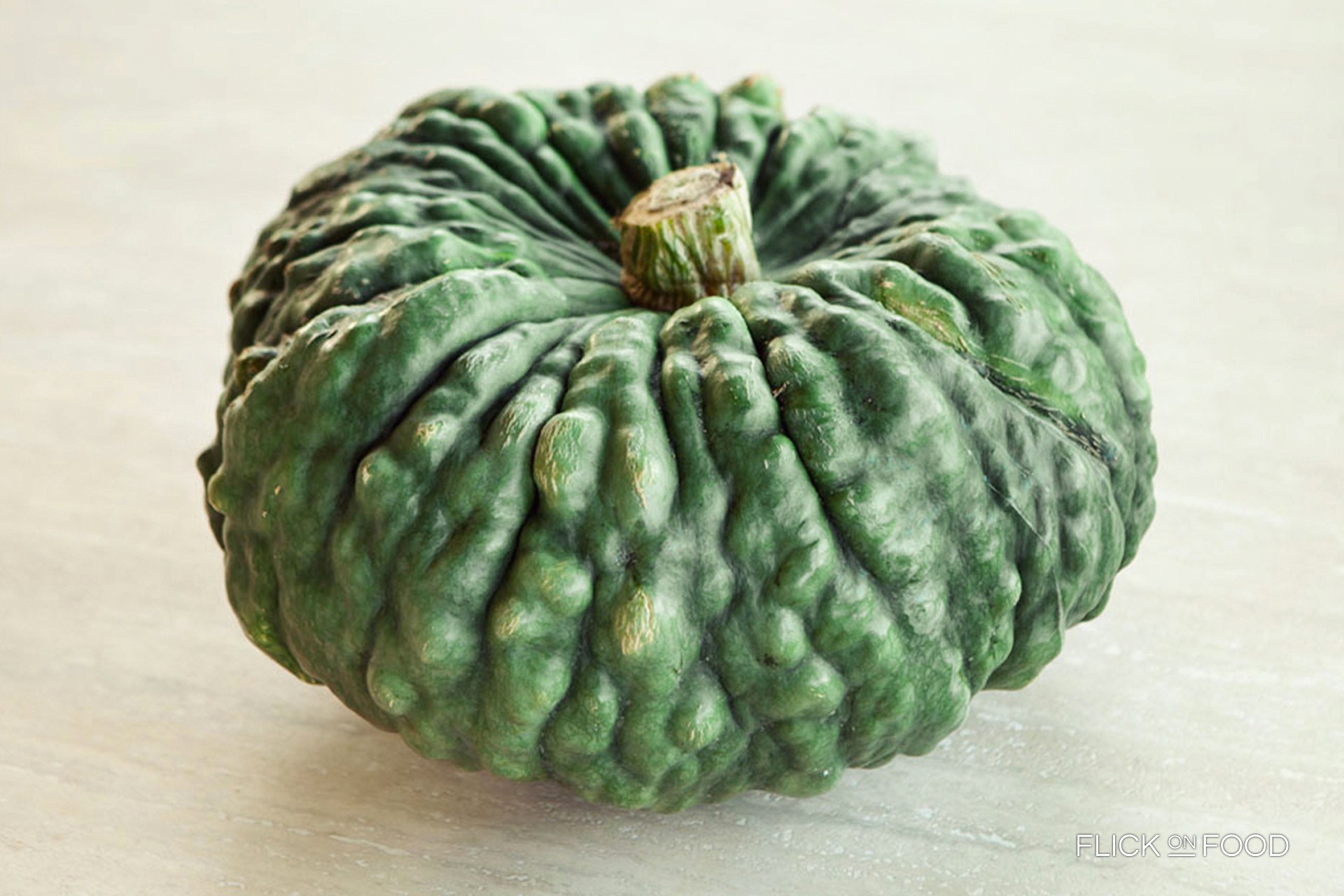
Its size and bumpy texture make this squash a great decorative element!
Origin
The marina di Chioggia squash gets it name from two places: Chioggia, its birthplace, and ‘marina’ (marine) from the fact that it grows in coastal areas particularly rich in sea salt. With a highly recognizable shape similar to a flattened turban, its rind ranges in color from yellow to gray. This squash is one of the most well known varieties in the Veneto region, not just for its irregular shape but also for its extremely sweet flavor. Before they fully mature, these squash have beautiful white and bright green stripes, but they’re not picked until they develop certain characteristics: a dark green color with yellow pulp and a prominent stem. Although their appearance inspires great chefs and lovers of local cuisine, it’s a difficult product to commercialize. In fact, sales don’t exceed 150,000 tons in a whole season.
Cookit
This squash can be cooked in a variety of ways such as: a delicate squash and leek puree, or risotto with squash and hints of rosemary. Its irresistible flavor means it’s even fantastic simply boiled or roasted, then drizzled with a bit of extravirgin olive oil. Its can be used to make a delicate stuffing for ravioli with octopus, pachino tomatoes and a basil cream, or in delicious tortellini with broth. Yet another idea is in a minestrone with beans, soups or as a side.
Did you know
You can read mentions of this squash variety from as early as 1600. In Veneto, they were commonly known by nicknames such as zucca barucca (holy squash) or zucca baruffa (brawling squash). The latter was used by Carlo Goldoni in the play The Chioggia Scuffles, while the former was due to its nutritional and health properties. The ‘holy squash’ moniker also came from the fact that it kept well throughout the winter and was nourishment even for the poorest families.



